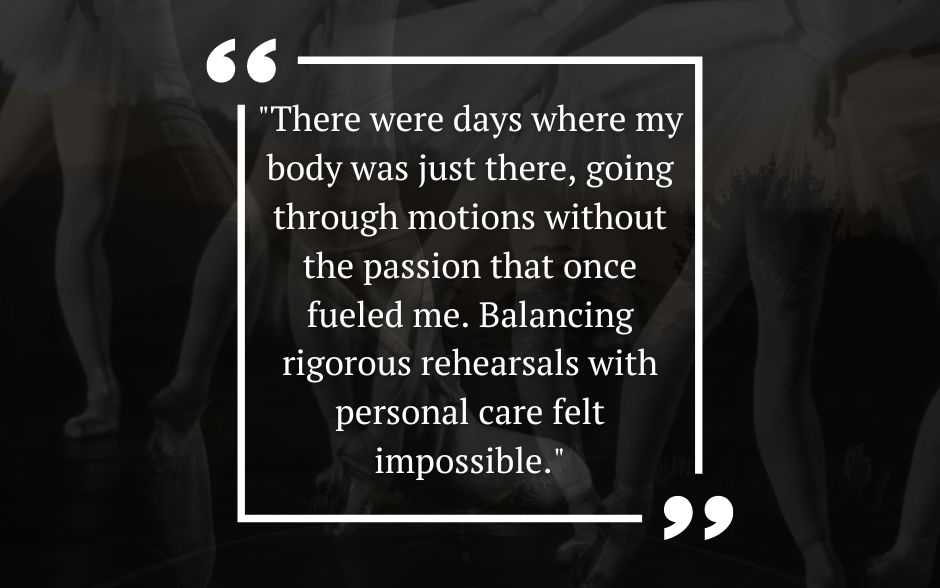Overcoming Burnout in Ballet: Prioritising Dancers' Well-being Over Performance
Burnout is an all-too-familiar adversary in the world of ballet, where the demands on your body and mind are constantly high. The intense training regimes, the perpetual quest for perfection, and the emotional investment required can leave you feeling completely drained. Understanding the signs and having strategies in place to manage and prevent burnout are paramount to ensuring that your passion for ballet remains a source of joy rather than a burden.
Before diving into strategies, it's crucial to recognize the signs of burnout. They can vary, but common indicators include:
- Physical Exhaustion: Persistent fatigue and muscle pain that doesn’t seem to improve with rest.
- Mental Fatigue: Feeling overwhelmed, easily irritable, or apathetic towards practice and performance.
- Decreased Performance: Struggling with routines that once came easily, and finding it difficult to maintain focus and motivation.
- Emotional Detachment: A sense of disconnect or disinterest in an activity you once loved deeply.
So, how can you prevent this from happening? The road to maintaining your well-being while pursuing a career in ballet involves a multi-faceted approach. Incorporating self-care routines, setting realistic goals, and maintaining a healthy balance between rest and physical activity are crucial elements. In the sections ahead, we will explore practical strategies to help you take care of your body and mind, ensuring that your love for ballet shines bright without burning you out.

First, let’s focus on self-care routines. It’s not just about spa days and bubble baths, although those can certainly help! Self-care for ballet dancers means listening to your body’s signals. If you're feeling fatigued or experiencing persistent soreness, it might be your body asking for a break. Prioritising adequate sleep, eating healthy, and allowing time for mental relaxation can significantly mitigate burnout.
Next, setting realistic goals is vital. While it’s fantastic to aim high, setting unattainable goals can set the stage for disappointment and stress. Break down your ambitions into manageable milestones and celebrate each achievement, no matter how small. This way, you maintain motivation and avoid feeling overwhelmed.
Maintaining a healthy balance between rest and physical activity is also essential. Ballet demands a lot from your body, so it’s crucial to allocate time for recovery. Incorporate rest days into your schedule and use them wisely. Engaging in low-impact activities such as PBT or yoga can help keep your body in shape while giving your muscles a break. Remember, well-rested dancers are less prone to injuries and can perform more effectively.
Let’s not overlook the importance of nutrition. Fueling your body with a balanced diet, rich in proteins, complex carbohydrates, healthy fats, and staying hydrated can improve both performance and recovery times. Consulting a nutritionist who understands the specific needs of dancers can be incredibly helpful in creating a diet plan that supports your rigorous training schedule.
Finally, understand that mental health is just as important as physical health. The competitive world of ballet can cause significant stress and anxiety. Don't hesitate to seek support from counselors or therapists who can help you navigate these challenges. Developing techniques like mindfulness, meditation, or simply talking about your feelings can be effective ways to manage stress.
By embracing these strategies, you can cultivate a sustainable and fulfilling ballet practice, ensuring your passion for dance continues to thrive without succumbing to the shadows of burnout.
Suscríbete a nuestro newsletter
Recibe consejos, noticias y recomendaciones.